Rachel Neumeier's Blog, page 101
June 6, 2022
Invictus Update: Argh, So Close
Nope, not quite finished with Invictus, which on the one hand is soooo annoying, but I’m soooo close.
Three basic comments about this manuscript:
A) I’m sure you’ll all be totally astonished to hear that it’s gone longer than my estimated maximum. I just passed 170,000 words this morning. My NEW estimate is SURELY not more than 175,000 words and maybe actually less. I honestly have ONE chapter to finish, ONE chapter to smooth out, and ONE chapter (a short one) to write. That’s it! I’m really sure this time!
B) I’ve gotten the “flow” back, which is great! Took about, what, seven weeks, but after gritting my teeth through a heck of a lot of words, I’m finally zipping right along and enjoying this last little bit. We are, needless to say, past the exciting climax and into the part where everyone works out their relationships and get set to move into the future. Although parts of the climax surprised me quite a bit and were therefore fun to write. Those parts may turn out not to flow smoothly out of previous bits, or may make previous bits unnecessary, so that’s going to be something to address early in the revision process. I can see that I’m going to start revising not at the beginning (I have been OVER and OVER that part), but almost smack dab in the middle.
You know, if you’d said at the beginning of this year, “I see that you have 90,000 words sitting here, but I don’t think that means you’re 2/3 of the way through this book — more like 1/2, I bet,” I … guess I would have found that plausible, actually. But I sure did not expect this draft to wind up quite this long. And of course it’s a bit annoying to think I’m probably going to wind up cutting it back pretty hard, but here we are, all part of the process.
C) The three-week break between semesters is over and boom! now that I have flow back, I’m inconveniently going to have less time to work on this manuscript. So I’m betting it will take a good week to actually finish rather than two or three days. Especially because I’m carrying puppies in and out and in and out, and feeding them, making sure to pick up Seriously Plump Boy Three so he can’t push the others out of the way and get far more than his share. And all that leads to sitting around watching the puppies. At this point they sometimes spend a bit of time scampering around in the living room, where I can pretend I’m looking at my laptop. Spoiler: when they’re out, I’m really looking at the puppies.
I just figured out that, at birth, Tiny Boy Four was 56% as big as Seriously Plump Boy Three. He is now 88% as big. So, basically, even Somewhat Smallish is starting to wear off as a nickname.
Anyway, by NEXT week, I should be typing THE END for Invictus, after which I will set it aside for a good long while and most likely turn promptly to Tasmakat. I just worked out something neat I should do toward the beginning. I mean, along with many, many neat things along the way from front to back.
I already have the cover for Tasmakat, by the way. Just the ebook so far because I have no clue what the eventual page count will be. I’m not sharing it because I feel like it’s bad luck to post the cover before I have a complete draft. But! I do plan to put Tasmakat up for preorder the very moment I have a complete draft, before I even start revisions. It will be the first book I have ever put up for preorder that far in advance, and I’ll be really keen on seeing how many preorders it accumulates. A lot, I hope.
I guess I should also think about getting a cover for Invictus. Wow. That feels like quite a step. That feels like a complete draft is nearly in my hand.
Please Feel Free to Share:






The post Invictus Update: Argh, So Close appeared first on Rachel Neumeier.
June 5, 2022
They Grow Up So Fast
You know, between birth and the time eyes open, really, not much seems to happen with puppies. They’re either strong and vigorous or, perhaps, weaker and in need of support, but as long they’re fundamentally healthy, then each day goes by with an incremental uptick in weight, but not much really changing.
Then their eyes open, and they make the very first extremely clumsy play gestures and start to get up on their tottery little legs. Books say eyes open from 10 to 14 days. For me, it’s usually more like 14 to 18 days. Regardless, everything happens faster from then on.
Hopefully they’ll try actual food. Even if they won’t, suddenly they’re much steadier and learning to walk on tile floors. Two days later, they’re wobbling around for ten minutes after nursing. Two days later again and they’re suddenly bouncing, not wobbling, and awake for a whole hour at a time, inconceivable the previous week.
I would say that with any luck at all, the puppies’ second month is truly enjoyable for everyone: lots more daily work, but much lower stress, with a tremendous payoff in cuteness, which increases by leaps and bounds through the four-to-eight week period. I start casual housetraining at five weeks, partly because it’s good for the puppies and good for eventual owners, partly because I don’t particularly like cleaning up messes, so it’s worth it to me to make an extra twenty trips up and down the stairs every day, taking puppies out, giving their cleanliness instinct a chance to develop. Also, usually I’m at least thinking of keeping a puppy myself, so obviously the more quickly the puppy is reliable indoors, the better.
Besides all that, outside time gives puppies a chance to develop both physically and mentally. From week 5 to week 6, my puppies learn to deal with uneven ground. They fall off a three-inch-high step and learn to understand edges. They gather their courage and venture a few feet from me or from one of the babysitter dogs. They also meet people — these pictures below were taken by a visitor (whose phone camera is better than mine!). This is the period where puppies benefit greatly from people coming to the home — it’s too early for them to go anywhere.
 Boy 4
Boy 4 Boys 4 and 3
Boys 4 and 3 Boy 1
Boy 1Then they come in and crash for hours.
This week, from Week 6 to Week 7, the puppies will get a LOT more physically competent and a LOT more independent. They’ll start zipping off on their own, exploring the far reaches of the yard and wrestling (inevitably) on top of the hostas. They’ll probably transition to hard kibble. They’ll stay awake MUCH longer, though they’ll still crash hard when they’re tired out. They’ll spend a lot more time out in the living room with the other dogs, and they might take their first very easy trip in the car and to town. I take them two at a time, first to my mother’s house, which will be their first different place. We’ll cross the street by driving around and around the circle drive to show them how car rides work. Then they’ll get to visit an office in town where people are always delighted to sit on the floor and play with puppies.
But none of that is quite yet. This week is a big transition week from dependence to independence. There’s no rush. They’ll let me know by their behavior when they’re ready for the next steps. Right now, they’re exploring the yard and learning the world exists and is filled with good experiences.
Please Feel Free to Share:






The post They Grow Up So Fast appeared first on Rachel Neumeier.
June 2, 2022
Writing Fight Scenes
So, I’ve been working my way rather slowly through Eric Lowe’s book The Use of Medieval Weaponry and also Marie Brennan’s book Writing Fight Scenes. These are both excellent, but I’ve found Lowe’s book more immediately useful. That is, I was reading The Use of Medieval Weaponry while doing final revisions for Suelen, which means I not only had a chance to reconsider various commas, I also switched out casual references to leather armor to “layered linen,” which is WAY MORE REALISTIC, it turns out, and did any of you know that?
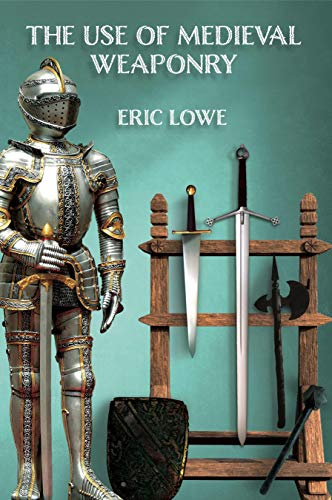
Leather armor as a light armor for agile fighters is apparently almost entirely a fantasy invention, while in the real world, long jackets made of twenty or up to thirty layers of linen cloth were in common use by ordinary soldiers, and quite effective too. Particularly when combined with chain mail, because linen is highly resistant to cuts while mail is much more resistant to thrusts. This is really neat stuff to know about. I’ve never described armor in the Tuyo world because I didn’t want to encourage a European vibe, which is inevitable if you mention chain or (especially) plate armor, but I didn’t know what other kinds of armor I might want to use, so I kind of passed lightly over the whole topic. Linen totally lacks any particular connection to pop culture and can easily be defined as cheap, easily available light armor for ordinary soldiers. Now that I’ve read Lowe’s book, you can bet I will more readily mention and describe soldier’s ordinary gear in the future.
Eric Lowe also describes the actual use of all sorts of Medieval (and Medieval-adjacent) weapons – long sword, arming sword (I didn’t know there was a difference), greatsword, sword and shield, sword and dagger, sword and cloak, two swords, maces and axes, pole weapons. Much of the time, I’ve fortunately done plausible things. I based the Lau formation work with short sword and shield on the Romans, of course, so I knew that was fine, but it turns out that a sword alone, without a shield, especially without armor is a stupid way to fight … unless you consider honor and showing courage paramount, in which case it’s great! So that works fine for the Ugaro, especially since in real battle rather than duels they’d more likely fight with a sword-and-dagger or two-sword combination, both of which are good choices. The eagle warrior with the two swords? Great choice, very suitable! That’s a relief, especially since I did it that way just because the visual worked great in my mind’s eye.
But let me back up.
Lowe got into Medieval weaponry via gaming, then became an expert in historical European martial arts. He quotes extensively from surviving European fencing treatises, then explains those quotations again in modern language, which is not the part I followed particularly well since I have no personal experience in fencing. But then Lowe describes the sorts of situations where a weapon or weapon combination would have been particularly useful, as for example here: “Few other historical weapons combine the greatsword’s ability to threaten a large area with the ability to redirect its attacks as quickly as a sword. Both elements are critical to the greatsword’s role as a crowd control weapon. Unlike the cuts of two swords, which can surround a fencer with a rapid but short range flurry of blows, the greatsword’s cuts are relatively ponderous (I am speaking in relative terms: in absolute terms the cuts of a greatsword can still come eye-wateringly fast). However, the great reach of a greatsword means that it can keep opponents very far at bay. A single fencer armed with a greatsword can hold off a great many opponents armed with shorter weapons …” Lowe then goes on to describe exactly how this weapon could be useful for getting through an alley stuffed with opponents, defending yourself when totally surrounded in an open area, defending a ship against boarders, clearing a house, protecting a nonfighting companion from a hostile crowd of enemies … can’t you just see the fiction scenarios writing themselves at this point?
In contrast to Lowe, Marie Brennan comes to fight scenes via cinematography.
“So I had to figure out how to give the director what he really wanted – a big dramatic scene – within the constraints of the stage. … I sat down with the actor playing Troilus, and together he and I constructed an arc for the scene: how it would start, how it would end, what shifts would happen along the way. … Like a piece of music, it needed dynamics. And that meant digging into character, making use of the space, and lots of other things I now realize are integral to a good fight scene. … That’s what I came to understand about fight scenes. They’re part of the story, and not just on the level of plot [but also character].”
Lowe understands this too, as is clear in this Quora answer illustrated with a fight scene from one of Tamora Pierce’s novels. But using fight scenes to move the plot, build character, and support the story’s themes isn’t what Lowe’s book is about. It’s what Brennan’s book is about. Her books hardly touches on the mechanics of how weapons were used and how people actually fought. Brennan says up front, “… the details of how to fight are possibly the least important component of a fight scene. The crucial components are the same ones you’re already grappling with in the rest of your writing – description, pacing, characterization, and all that good stuff.” Which is true! But it’s still obviously useful to know how people actually did fight with a sword and a small shield, and why someone might choose that combination rather than two swords.
These two books are therefore highly complementary. But of the two … if you twisted my arm … I would kind of recommend Lowe’s book. This is because you, as a writer, can pick up the dramatic part of how to structure fight scenes by reading good fight scenes (such as the one in Tamora Pierce’s novel) that succeed in carrying forward the plot and building character, and watching cinematic fight scenes that are visually persuasive and compelling (such as the one in the Princess Bride). But nothing or almost nothing in fantasy novels or movies is going to tell you that leather armor wasn’t actually used and layered linen was; or how a whole bunch of types of fighting depended massively on grappling and wrestling to finish the job; or the specifics of how different weapons were used in a wide variety of circumstances. Not that an author has to accurately represent anything at all; in writing fiction, believability is a lot more important than accuracy and making things sound plausible is and should be the aim, not getting every single detail exactly right. But personally I do think it’s neat to also get things more or less right.
Overall assessment: these are both actually useful resources for writers. I’ve been highly, and I mean highly, disappointed in various other books that purport to be resources for writers. I’m thinking particularly of a book about poisons and figuring out causes of death that is all but useless for fantasy because it’s aimed so firmly at novels with contemporary settings, and one about injuries that deals with the subject exclusively from the modern point of view, where you basically stabilize the patient and head for a well-equipped hospital. Absolutely useless, both of them. In contrast with that sort of thing, if you’re writing in any kind of fantasy setting, both Lowe’s books and Brennan’s are great books to have read and to keep handy for reference.
Please Feel Free to Share:






The post Writing Fight Scenes appeared first on Rachel Neumeier.
May 31, 2022
What Happens When You Ask Robots To Create Art?
A funny post from Astral Codex Ten: A Guide To Asking Robots To Design Stained Glass Windows
I love stained glass. Not so much your usual suburban house stained glass with a picture of lilies. The good stuff. Cathedral windows, Art Nouveau, Art Deco. Why did we stop doing that? I blame the conspiracy.
Recently I’ve been experimenting with small-scale alternatives. You can get custom-printed window film from these people. If you print out a picture of a stained glass scene and stick it on a window, it looks pretty realistic.
But what scenes to use? Most of the stained glass images you can find are saints, which isn’t really the mood I’m going for. What I’d really like is a giant twelve-part panel depicting the Virtues Of Rationality. But the artists I’ve asked to design this all balk. I need an artist who works for free and isn’t allowed to say no.
Enter DALL-E-2, the new art-generating AI.
Click through and enjoy the somewhat peculiar results when the computer is asked to design a stained glass window showing Charles Darwin studying finches.
As usual for Scott, this is a long post that becomes quite thought-provoking.
Please Feel Free to Share:






The post What Happens When You Ask Robots To Create Art? appeared first on Rachel Neumeier.
Schindler’s List
Here, via The Passive Voice blog, is something touching and remarkable: Mimi Reinhard, the woman who typed up the actual, real list, has passed away.
She was a hundred and seven.
Wow.
She did not have much direct contact with Schindler, but liked him as a boss. He was charming and outgoing, and treated his Jewish workers kindly, not like scum. Perhaps even too kindly, for he was a great womaniser, with several pretty secretaries besides her, and got into trouble once for kissing a Jewish girl on the cheek at his birthday party. Maybe she was there because he liked her cool blonde elegance, rather than her mind. She knew, too, that he was very rich, and struck deals with the Nazi high-ups all the time by bribing them with black-market luxuries to get better conditions and more food for “his” Jews, as he called them. But that sounded patronising as well as protective, as if they were just cogs in his factory, since Jewish slave-labour was cheap. She also could not forget that he was a thoroughgoing Nazi, an SS man, who sometimes spent whole nights carousing with the officers.
In short, her boss was no angel. And there was something chilling about the list, with its constant repetition of number, race, name, skill. Perhaps he did not mean to save “his” Jews after all, but simply move them to another camp, a fatal one. His closeness to Goeth, though it was tactical, was worrying. Some people, she knew, had refused to let their names be put on the list for those reasons. She decided, though, that she would trust him. She added her name partly to be useful to him, by swelling the numbers. Then she added three friends as well.
That was a gamble, and for one terrifying moment she seemed to have bet the wrong way. Three hundred of the women and girls on the list, including her, were transferred by mistake to Auschwitz, where they endured two weeks that reminded her (from her language-and-literature studies) of Dante’s “Inferno”. With even more bribery, and threats too, Schindler got them out. In the end the list and the transfers worked, and everyone was saved.
This was undoubtedly the most powerful and probably objectively best movie I’ve ever seen:
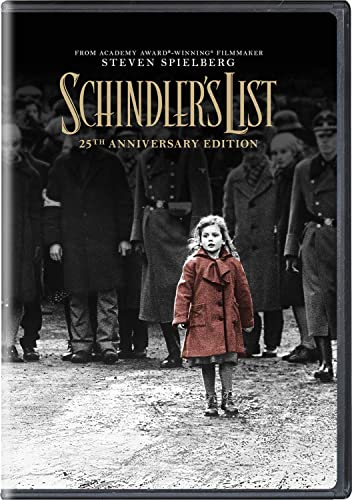
Since we were just discussing genuinely good and evil fictional characters, let me pause a moment and consider Oskar Schindler. For character arc … I don’t know if I can think of any fictional protagonist who equals the real Oskar Schindler. Yet even when he gave ever appearance of being shallow and selfish, he already must have had within himself the seeds of the man he became.
Please Feel Free to Share:
Oskar Schindler: I could have got more out. I could have got more. I don’t know. If I’d just… I could have got more.
Itzhak Stern: Oskar, there are eleven hundred people who are alive because of you. Look at them.
Oskar Schindler: If I’d made more money… I threw away so much money. You have no idea. If I’d just…
Itzhak Stern: There will be generations because of what you did.
Oskar Schindler: I didn’t do enough!
Itzhak Stern: You did so much.
[Schindler looks at his car]
Oskar Schindler: This car. Goeth would have bought this car. Why did I keep the car? Ten people right there. Ten people. Ten more people.
[removing Nazi pin from lapel]
Oskar Schindler: This pin. Two people. This is gold. Two more people. He would have given me two for it, at least one. One more person. A person, Stern. For this.
[sobbing]
Oskar Schindler: I could have gotten one more person… and I didn’t! And I… I didn’t!







The post Schindler’s List appeared first on Rachel Neumeier.
May 30, 2022
Whew, SUELEN is Ready to Go
Just loaded the final Kindle and paperback versions of SUELEN to KDP. Whew! Not quite down to the wire, but it sort of seems like it, with only eighteen days to go to the release date.
You’ve probably pre-ordered SUELEN, but if not, here’s the link.
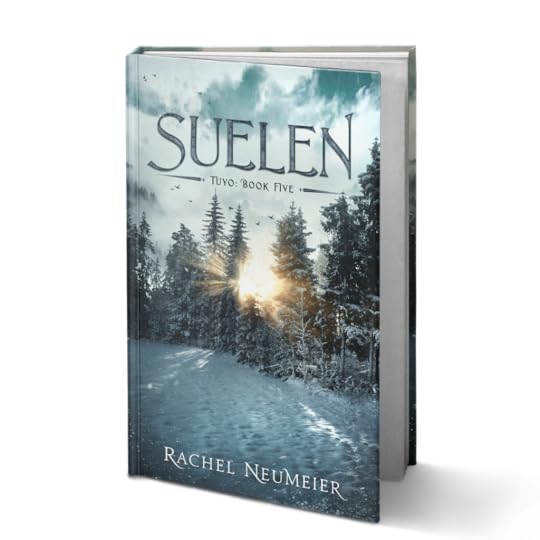 Please Feel Free to Share:
Please Feel Free to Share:







The post Whew, SUELEN is Ready to Go appeared first on Rachel Neumeier.
So Cute, They Look Artificial
Here are Leda’s boys now — these pictures were taken from about three and a half weeks to four and a half weeks.
In order:
 Boy 1, who is not as solemn as he looks here.
Boy 1, who is not as solemn as he looks here. Boy 2, practicing looking waaaaay too cute to be a real puppy.
Boy 2, practicing looking waaaaay too cute to be a real puppy. Boy 3, and I know I posted this picture earlier, but wow, what a great shot!
Boy 3, and I know I posted this picture earlier, but wow, what a great shot! Somewhat Smallish Boy 4
Somewhat Smallish Boy 4Tiny Boy 4 has changed to Somewhat Smallish Boy 4, as he has started to catch up to the others. There’s only a three-ounce difference now. He’s still not as plump, but he’s working on that. Really into food, that’s for sure!
It’s just astonishing how different two litters of related puppies of the same breed can be. Leda’s boys are half-sibs to Morgan’s puppies from last year because in each case the father is Ishmael. They’re also cousins once removed, I guess? Because Morgan is Leda’s full niece. I think that makes their puppies cousins once removed. Anyway, they’re related by about three-eighths or so. But they’re so different!
A) Morgan’s puppies were VERY HARD TO WEAN. They were right up there with the most difficult puppies I’ve ever raised. They refused everything — puppy kibble soaked in formula or in water; meat baby food; Royal Canin puppy starter, which is super-palatable. They weaned straight onto hard kibble when they were about six weeks old. Well, some puppies are like that. This was the second litter of mine that did that.
In contrast, Leda’s puppies were SUPER EASY TO WEAN. They were all delighted to try plain formula, kibble soaked in formula, kibble soaked in water, anything. You put it in front of them and they dive right in. Feet in the dish, shoving for a place, making a total mess, but wow, are they happy to eat real food. Even the plumpest, which is Boy 3. I’ve basically allowed Leda to quit nursing completely. She joins the puppies to clean up after mealtime, but she walks in circles and scoots back out of the puppy room pretty fast.
 That’s Boy 2 with his front half all the way in the dish.
That’s Boy 2 with his front half all the way in the dish.B) Morgan’s puppies were FRONT OF THE ROOM puppies. They never noticed they had a den. They crowded up to the gate and nestled down on the dog bed there. That’s where they slept 100% of the time.
Leda’s puppies are DEN puppies. They sleep in the doorway of their den and, when startled or if the room starts to get cooler than they like, they retire into the den. They sleep at or in the den 100% of the time.

C) We shall soon see how these puppies compare for the super-important third criterion for puppy raising: housetraining.
Morgan’s litter were SUPER EASY TO HOUSETRAIN. I mean, for me. The new owner must also remain attentive and finish the job. I’m good at housetraining puppies, however, as you’d expect. I realize that normal puppies become reliable from four to eleven months, more or less, and I’m therefore calm about the whole process and just persist until the puppy is reliable. BUT, all that aside, I certainly appreciate puppies that catch on fast, and Morgan’s puppies did. The one that stayed with me till she was seventeen weeks old? That puppy never had an accident in her new home, I hear. [Buffs fingernails on shirt, looks smug.]
Will Leda’s boys be EASY or HARD or something in between? No way to tell. BUT, this coming week is when I will start taking them outside. I housetrain at first solely by providing chances for the puppies to do their business outdoors. All puppies want to move away from their den to do their thing, unless their cleanliness instinct has been destroyed by being caged in a pet store or puppy mill during these important early weeks. You can turn the cleanliness instinct into an indoors-bad-outdoors-good idea with relative ease if you provide consistent opportunities to go outside at tactically sensible times, such as right after the puppies wake up and right after they eat. I won’t correct mistakes at all until they’re eight or nine weeks, and by then they should be very, very clear on the idea that Outside Is Good.
I really wish one of these puppies was a girl. With tremendous structure and a lovely head. I’m going to be really sorry to let them all go.
Please Feel Free to Share:






The post So Cute, They Look Artificial appeared first on Rachel Neumeier.
May 28, 2022
Writing Good and Evil Characters
From Writer Unboxed, a matched pair of posts by Dave King: The Search for Faith and Goodness and Getting to Know Evil.
What a great idea for post topics! I mean, sure, morally ambiguous protagonists can be fantastic — for me it depends on the, ah, flavor of ambiguity, so that I absolutely love Nicholas Valiarde and particularly, in the later series, his daughter Tremaine. They’re ruthless, but also Nicholas goes to a lot of trouble to save Inspector Ronsarde and of course Tremaine goes to even more trouble to save Ile-Rien. Come to think of it, so does Nicholas again in that series. And all of this is totally believable: both the ruthlessness and the self-sacrifice.
But let’s by all means take a look at characters who are much less ambiguous. Let’s start by taking a look at each of the posts linked above.
Here’s what King says about writing a good character:
What makes it even harder is that, to write goodness effectively, you have to be a good person yourself – to face your own doubts or fears and yet have the internal drive to do the generous, self-sacrificing, loving thing. A lot of more ordinary writers, faced with writing good people, fall back on a less challenging alternative: Writing about faith.
And, wow, I’m immediately skidding to a halt. I don’t think that is true. I don’t think either part of that is true!
I mean I was going to go ahead and point to one or two characters of my own who are genuinely good people, and this sort of assertion makes that tough. Fine, I’m going to just flatly disagree:
You don’t have to be a genius to write a genius protagonist, you don’t have to be an exceptionally good person to write a protagonist who is an exceptionally good person, and you thankfully do not need to be thoroughly evil in order to write a thoroughly evil antagonist. I am indeed going to point to examples of each in my writing, so there, but I will pull out great examples of both good and evil characters from other people’s books as well. I’m not having any trouble thinking of examples, in fact, and I would bet that you aren’t either.
I’ll pause to add, I also vehemently disagree that most or even many writers write about faith as a shorthand for writing a protagonist who is a genuinely good person. That may be true in Christian literature, I’m not sure, but in SFF? Absolutely not. That is by far the exception rather than the rule. King’s assertion makes me think that he must write Christian literature because I doubt very much that conflation of “good” with “faith” is at all common in any other branch of literature. Let me just check his Bio. Oh! He’s not a novelist at all. He’s an editor. Well, he may have seen this sort of conflation in the books clients show him, but out in the world of published literature? I don’t think so.
Agree / disagree? Have any of you seen this particular thing, with authors using explicit religious faith to signal that their characters are good people? I think it’s far more often the reverse: explicitly religious people are shown as narrow-minded bigots 95% of the time.
What about the other post, the one about writing evil characters?
But to write believable evil characters, you have to get inside their minds. Anyone who gives advice on writing will tell you that you have to humanize your bad guys for them to be effective — cartoon evil is no more interesting than cartoon good. But writers also need a warning about just how painful it can be to enter an evil mind.
I picked that paragraph to quote largely because I want to disagree with it, thus paralleling my disagreement with the first post. You CAN humanize your Evil Antagonist; that’s okay. That’s one way to handle that character. You CAN set out to understand him. But that’s not actually necessary. You and your readers already know that people can be selfish, ambitious, indifferent to the wellbeing of others, and so on. I don’t believe you need to go out of your way as a writer to point to those traits. They come through clearly enough in the antagonist’s actions. And certain kinds of villains work best when they are left rather mysterious.
Daniel, in the Death’s Lady trilogy, is a genuinely good person.
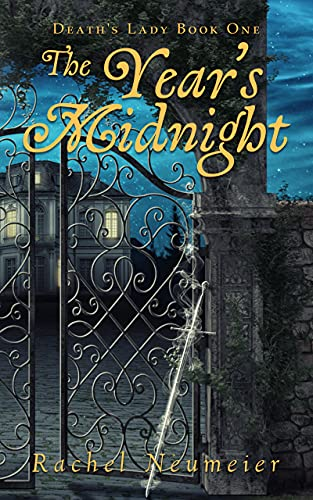
He’s kind, empathic, charitable, and just a good person. He’s a lot nicer than I am, I will add Also, you’ll notice that there wasn’t the slightest need to write about religious faith in order to write a character who is genuinely good.
And you know, now that I think of it, you could make a case for Mitereh also being a genuinely good person too. He sure is committed to keeping Talasayan peaceful and in handing down rulings that are merciful as well as just. But as a king, he has no choice but to be ruthless at times, which is not the case for Daniel.
The villain in the Death’s Lady trilogy is one of the more human and normal villains I’ve ever written, very different from the terrifying Lilienne in The City in the Lake or the creepy, inhuman Wyvern King in The Keeper of the Mist.
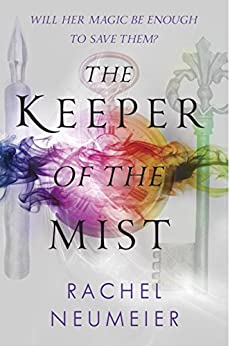
And this is why I disagree that you need to humanize or understand your evil antagonist. You do not. Lilienne is super-creepy and no one understands her. I mean, she’s probably driven by a desire for power? At least in part? Sort of? But that sure doesn’t do much to explain her or what little we know about her uber-creepy plans. Same with the Wyvern King. Sure, we had more human bad guys in The Keeper of the Mists too. I’m not saying that understandable evil is not effective; of course it is. I’m just pointing out that mysterious, eerie antagonists that the reader will never understand can also be effective.
In contrast to that kind of creepy antagonist, the Death’s Lady villain definitely is understandable in ordinary human terms. Selfish; ambitious; deceitful; indifferent to and therefore willing to use other people; intolerant of opposition. There was no need for any character to point to the villain and say any of that. It’s obvious that’s what he’s like. This is an understandable, human bad guy. But I found it pretty easy to write him specifically because I never tried to get too close to him, far less force the reader to get close to him. Getting right into his head isn’t necessary to know pretty much what kind of person he is, and that’s great, because who wants to spend time with that guy? No one, that’s who.
So! Genuinely good and thoroughly evil characters. I’ve got a couple candidates for both categories.
Kit, in From All False Doctrine. Kit is one of the most genuinely good protagonists I can think of. Is he a little too good to be true? Maybe. But Degan makes him perfectly believable. Also a particularly good example because Kit is a priest and yet no one would argue that the author is just pointing at the trappings of religious faith and saying, See, he’s a good person! No, Kit really IS a good person, and therefore this is an example of how to handle faith well in a fantasy novel. Here are my comments about this book.
Mouse/Ryou/Ari in the Phoenix Feather series. She’s this very powerful martial artist for a lot of the story, and how many bad guys does she kill during the entire quadrilogy? Anybody remember? One, that’s right, and she felt awful about it and never killed anybody else. Remember how she wouldn’t escape after the Emperor caught her because she’d have to kill the prison staff? Yes, a little too good to be true, but again, Smith makes Ari a believable character. Good contrast to the above because this is a story where people argue about morality and right action and so on, but not at all with reference to Christianity or anything that I think Dave King would call faith.
How about evil characters?
I’m just going to pick out one series here: the Spiritwalker trilogy by Kate Elliot.
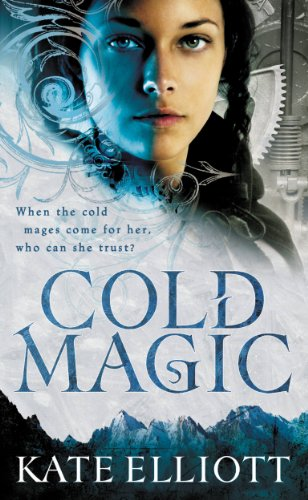
I don’t have to look farther afield because this trilogy is practically a showcase of different types of villains: the creepy, terrifying, powerful bad guy who isn’t really understandable; the arrogant noble who thinks he has a right to dispose of people as he sees fit; and most of all James Drake, who is the most human and understandable and also definitely the most hateable. Here are my comments about this series; you’ll see I said at the time that even though this series has a lot of great stuff and the protagonist is good and I love the feathered people and on and on, the villains are particularly outstanding. It’d be interesting to argue about which of the villains/antagonists is the most evil. I’d go for Drake, so maybe there is something to the idea of being able to relate to or understand a bad guy in order to make him really bad, or at least have readers perceive him as really bad.
All right, not crazy about novels that compel the reader to spend time with evil characters, but if a particularly good example of a good character leapt to your mind, please add that example in the comments!
Please Feel Free to Share:






The post Writing Good and Evil Characters appeared first on Rachel Neumeier.
May 27, 2022
Word of the day: Disembodied
From Daily Writing Tips, vis The Passive Voice, this:
In a very interesting BBC News article about ancient gardens, the writer describes an ancient relief that shows the vegetation-loving but brutal ruler Ashurbanipal and his wife reclining under a grapevine.
It’s an archetypal garden paradise—that is, except for the disembodied head of an enemy, which is hanging from a nearby tree.
The writer seems to think that disembodied—like dismembered, decapitated, and severed—has something to do with cutting off body parts.…
I enjoyed this post, which brought to mind a word that I think I may somehow never have used myself. Disembodied. That’s a great word. Maybe I have used it. Not, I hope, as a putative synonym for dismembered. Not that there’s anything wrong with that word either, however distinct the meaning may be.
Given that I’ve chosen “disembodied” as my word of the day, what’s your favorite ghost story? Bonus if you’ve got a ghost story that may perhaps be a farther under the radar than it deserves. I’ve got one:
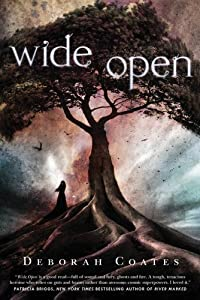
I really enjoyed this trilogy by Deb Coates. Here’s the description from Amazon:
When Sergeant Hallie Michaels comes back to South Dakota from Afghanistan on ten days’ compassionate leave, her sister Dell’s ghost is waiting at the airport to greet her. The sheriff says that Dell’s death was suicide, but Hallie doesn’t believe it. Something happened or Dell’s ghost wouldn’t still be hanging around. Friends and family, mourning Dell’s loss, think Hallie’s letting her grief interfere with her judgment. The one person who seems willing to listen is the deputy sheriff, Boyd Davies, who shows up everywhere and helps when he doesn’t have to. As Hallie asks more questions, she attracts new ghosts, women who disappeared without a trace. Soon, someone’s trying to beat her up, burn down her father’s ranch, and stop her investigation.
Hallie’s going to need Boyd, her friends, and all the ghosts she can find to defeat an enemy who has an unimaginable ancient power at his command.
I particularly liked Hallie’s father. He is basically inarticulate and Coates builds his character with his silence, which is at least as demanding as building a character through witty repartee. He is actually one of my favorite secondary character in the series.
Please Feel Free to Share:






The post Word of the day: Disembodied appeared first on Rachel Neumeier.
May 26, 2022
Historicals with a Genre Twist
Here’s a post at Book Riot: 20 MUST-READ, GENRE-BLENDING HISTORICAL FICTION BOOKS
I enjoy historicals and I’m certainly on board for added fantasy elements or whatever, so by all means, let’s take a look.
Okay, looks like this post includes the following:
—Historical Mysteries.Excellent category! I very much enjoy historical mysteries. I love mysteries with an interesting setting, and one way to get that is to use a historical setting. This post suggests this one:
MISTRESS OF THE ART OF DEATH BY ARIANA FRANKLIN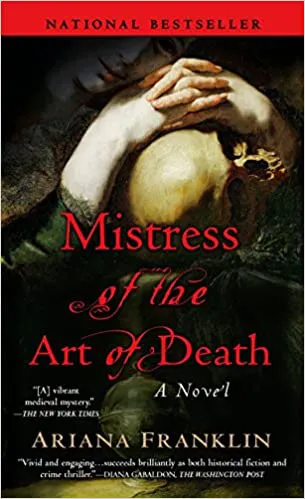
Set in 12th-century medieval Cambridge, England, Adelia is a female forensics expert who is summoned by King Henry II to solve a series of antisemetic murders. Adelia is not who the townspeople expected, but she proves herself more than capable. This is the first in a fun, informative series of five books, with the last being completed by another author after Franklin’s death.
I’ve heard of it, but I’m not sure I knew the protagonist was a forensics expert. Shades of Brother Cadfael, huh? I liked those — oddly, I liked TV show more than the books, very rare for me. Anyway, Mistress of the Art of Death sounds really good just from this brief description. I’m sure some of you have read it — what did you think?
My favorite historical mystery series is, as you may know, Barbara Hambly’s Benjamin January series.
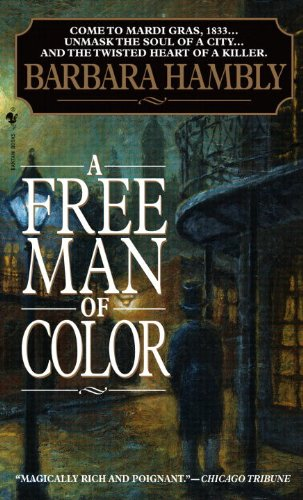
This is a very long series. Let me see, up to nineteen books! My goodness, that’s nearly tied with my my all-time favorite long-running series. Well, Hambly loves exploring this historical setting (1830s or so) and has a tendency to send Ben here and there, so lots of room to stretch out. Although really, I do like the New Orleans setting the best, and would like to see his vodoun sister, Olympe, take a more prominent role again. She’s interesting; I like her a lot. Of course Hambly has introduced a thousand great characters by this time. Not just the primary cast, but the secondary cast too — Ben’s other sister, Minou. Chloe Viellard. My absolute favorite secondary character, Augustus Mayerling, introduced in the very first book, whom I would LOVE to see again, preferably in a prominent role.
I actually have the second-latest Benjamin January book on my Kindle, but haven’t read it, because these are high-tension stories and I haven’t really been in the mood for super-high-tension novels during the past couple of years. Regardless, this is still my favorite historical mystery series. I haven’t yet picked up the most recent — I just realized this minute it was out.
Okay, what’s the next category suggested by this Book Riot post …
—Historical RomanceHa, there’s certainly no shortage here. I really don’t feel it’s reasonable to include this as a “genre-blending” category. There have got to be ten times more historical romances than historicals that aren’t romances. Twenty times. A hundred times, more than likely! This is true even if you categorize historicals with a fairly strong romance as “historicals” and only romances with a historical setting as “historical romance.” Let me pause to split the category up in that way:
a) Historicals with a strong romantic element: this is where I’d put Gillian Bradshaw’s excellent novels, such as possibly my favorite, Island of Ghosts. It’s hard to choose because so many of Bradshaw’s books are great, but that’s one I go back to over and over.
b) Romance with historical settings: All Regency romances, such as, wow, what to even pick from the enormous horde? Okay, fine, everything by Georgette Heyer, starting with the book that has my favorite of her male leads; and then let’s mention the excellent Brothers Sinister series by Courtney Milan; and the Spymaster series by Joanna Bourne, and we could just go on and on forever.
But fine, let’s set this question about historical romances aside. Next category!
—Historical SFOkay, the Book Riot post points to various novels involving time travel, which fine, that’s fair, but the best of their choices for actual historical SF is surely The Calculating Stars.
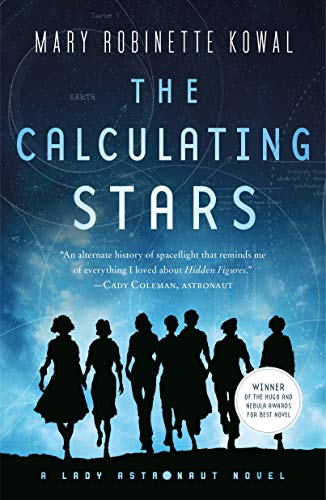
I liked that one quite a bit, but I must admit that for whatever reason I haven’t gone on with the series. Probably I should. I’m sure some of you have read the other books in this series. What did you think?
For time travel stories, I really did enjoy the first two books of the Extraction trilogy by RR Heywood. (I liked the third too, except for the ending.) With all the wild time travel, we actually get to enjoy the dinosaur era and the future and all sorts of points in between. While time travel is generally not something I particularly enjoy, sometimes and author pulls off a story I love, and Heywood did. Except, as I’ve said several times now, I’d really be inclined to read the first two as a duology and stop there.
—Historical FantasyHuge number of choices here, of course! The Book Riot post points out The Conductors by Nicole Glover, which is one I’ve got on my TBR pile right now. It is actually a historical fantasy mystery.
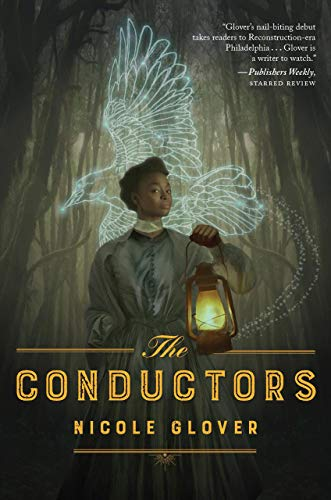
Here’s the description:
Hetty Rhodes and her husband, Benjy, were Conductors on the Underground Railroad, ferrying dozens of slaves to freedom with daring, cunning, and magic that draws its power from the constellations. With the war over, those skills find new purpose as they solve mysteries and murders that white authorities would otherwise ignore.
In the heart of Philadelphia’s Seventh Ward, everyone knows that when there’s a strange death or magical curses causing trouble, Hetty and Benjy are the only ones that can solve the case. But when an old friend is murdered, their investigation stirs up a wasp nest of intrigue, lies, and long-buried secrets- and a mystery unlike anything they handled before.
This sounds excellent and I’m very much looking forward to trying this one … when I’m (a) not so busy, and (b) in the mood for what I expect is probably a higher-tension and probably darker story.
Several others I’ve at least heard of on this Book Riot post, but it’s a huge, huge category. One that leaps to mind for me — The Frontier Magic series by Patricia Wrede.
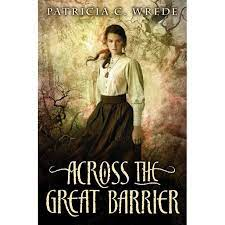
So much fun in a highly alternate Old West setting. The moment I thought of this series, I wanted to go re-read it. Especially the last book, which I haven’t read as often as the first. You know what, now I’m suddenly thinking that pausing to re-read everything by Patricia Wrede might be a fine idea.
—Historical HorrorThis is probably a smaller category, and certainly one I’m less interested in overall. But even though I’ve already pointed to Barbara Hambly for historical mysteries, I’m going to pick her out again for historical horror. Those Who Hunt the Night is my favorite vampire novel and I don’t think it’s close.
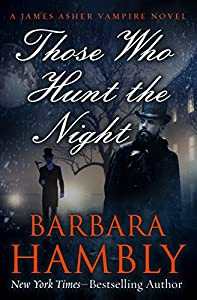
This whole series is excellent, and one of the reasons it’s great is — you probably saw this coming — the fantastically well-drawn historical setting. Once again Hambly sends her protagonists here and there in order to show off different geographic areas. There are only eight books in this series, I see; the most recent came out in 2019. I wonder if she’s stopping? I do think she may have painted herself into something of a corner with regard to the metaphysics and perhaps the relationships in this series.
Regardless, Those Who Hunt the Night is truly excellent and, as a bonus, stands alone.
I will add, the Book Riot post suggests a book for this category that’s set in … ready? … 1997.
And you might think a book set in 1997 doesn’t qualify as historical fiction, but remember that people born in that year are now old enough to rent cars.
Ha ha ha! is my response to that argument.
No, 1997 does NOT qualify as a historical setting. That’s not as entirely ridiculous as picking out Watership Down as a classic example of Urban Fantasy, but seriously? Frankly, I think you’re pushing the definition if you point to any setting later than 1950, and even that strikes me as really recent for anything you’re calling a historical novel. I wouldn’t actually declare a particular year as the cutoff for defining a historical setting, but if I did, I’d probably say you’ve got to be a hundred years or more in the past or it doesn’t count. (Honestly, I really just say that I know a historical setting when I see one, and 1997 definitely does not count.)
Okay! I do enjoy historical novels, any genre, so if you’ve read any historical recently that caught your fancy, by all means drop it in the comments.
Please Feel Free to Share:






The post Historicals with a Genre Twist appeared first on Rachel Neumeier.



